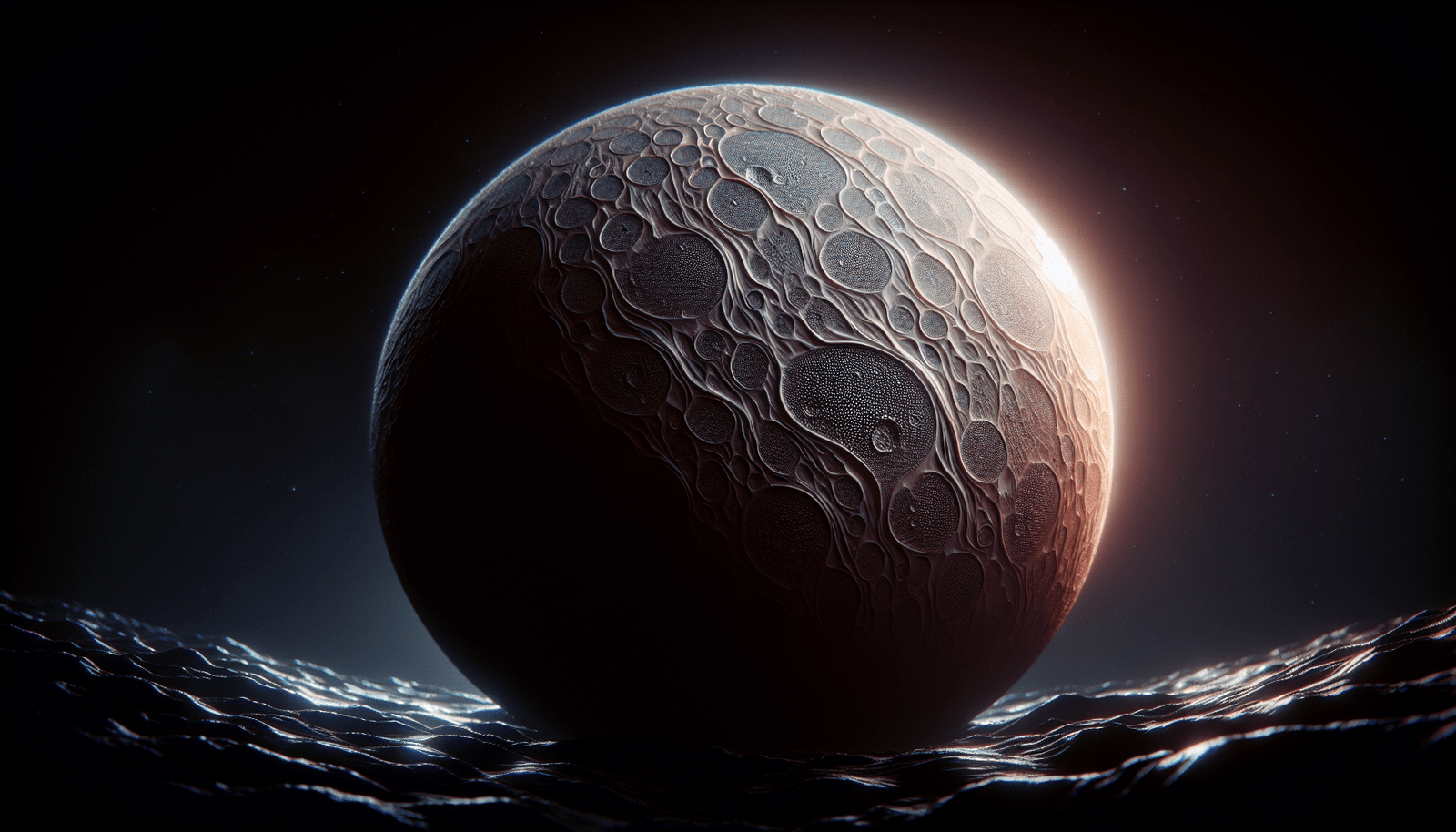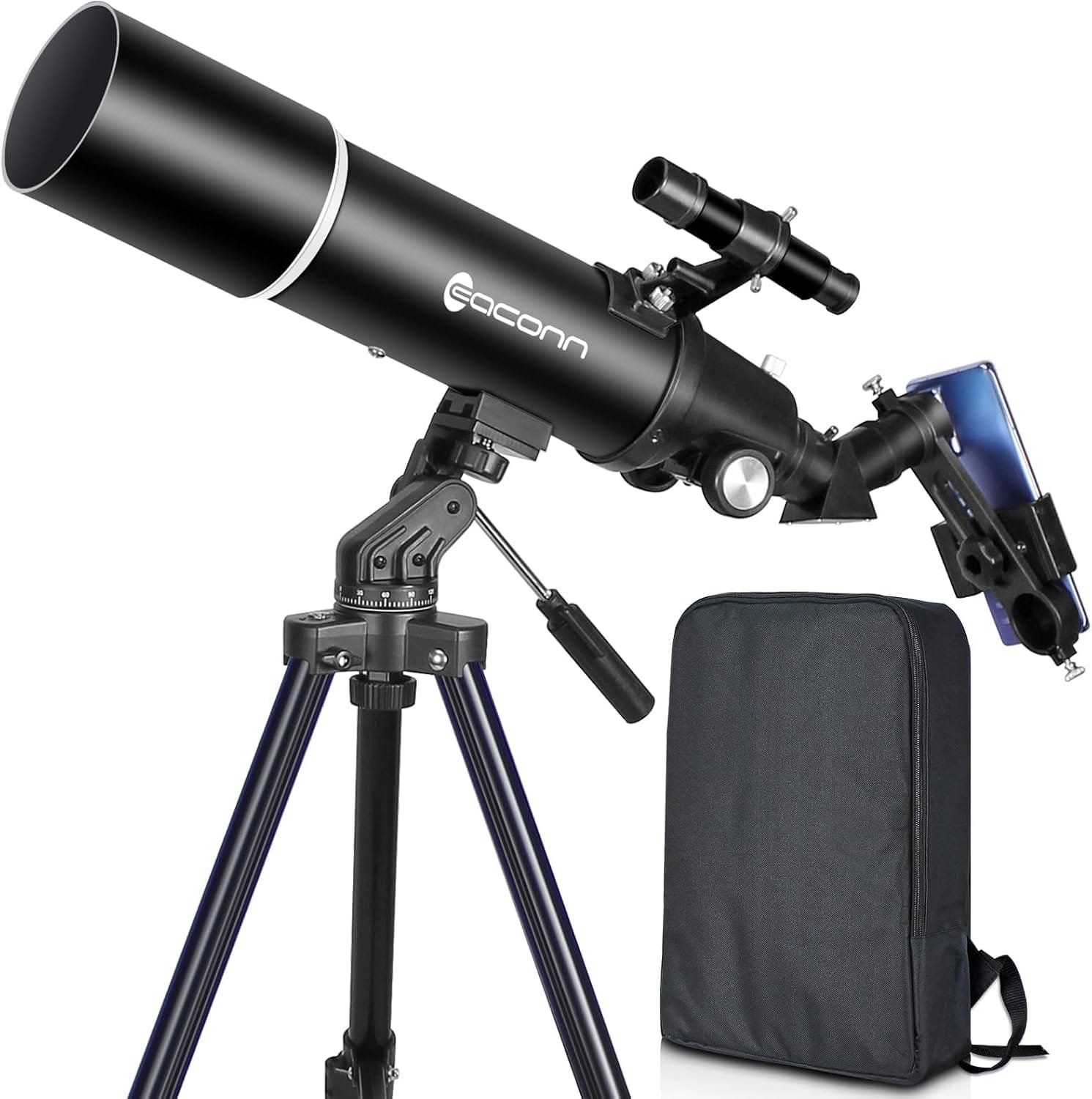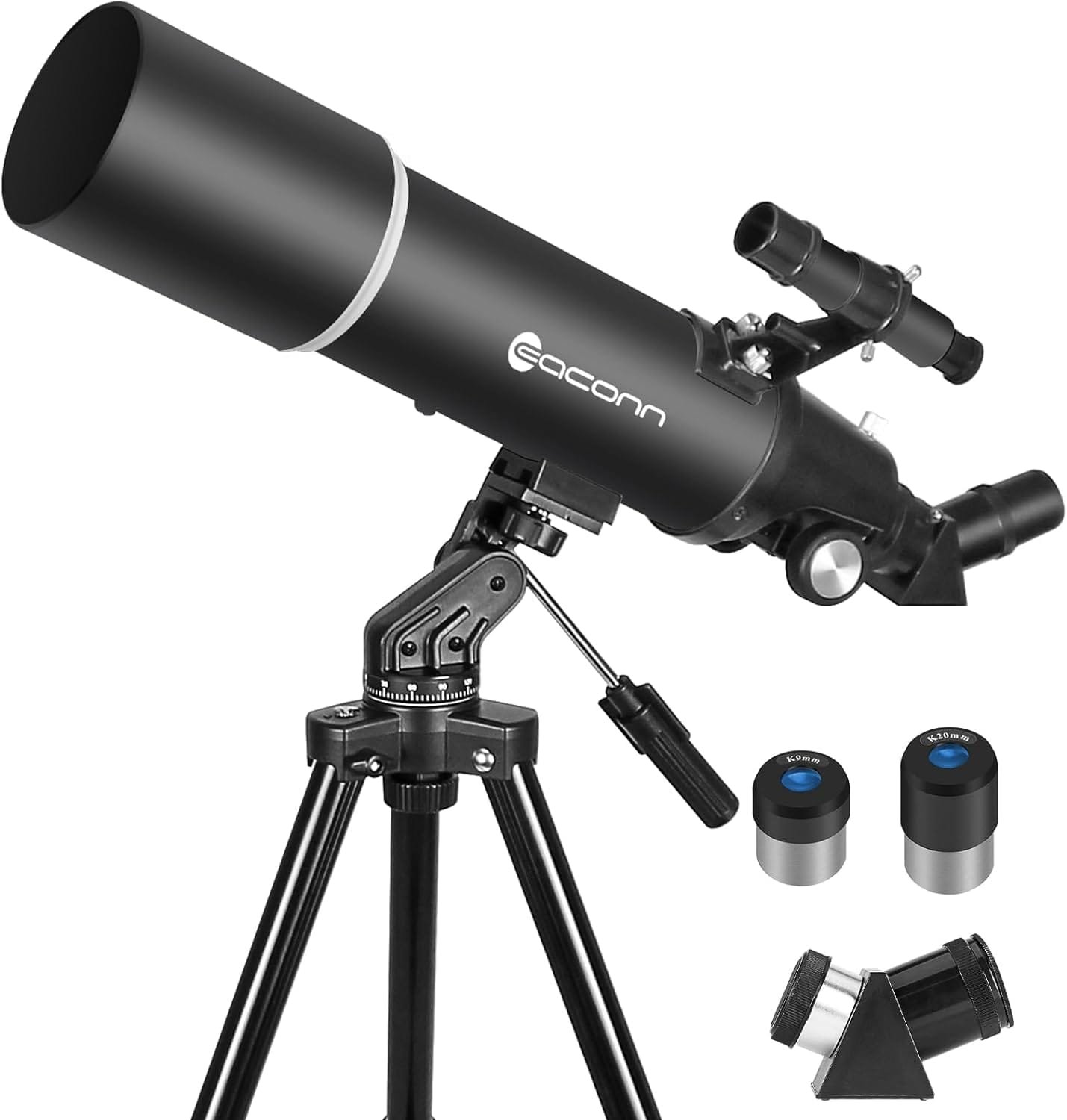Did you know that small planets could hold the key to life beyond Earth? A study published in Nature Communications explores the potential for large moons to form around large exoplanets, similar to how our Moon formed around Earth. While astronomers have not yet confirmed the existence of any exomoons, understanding their formation and evolution is crucial in our search for life beyond our solar system. This study suggests that relatively small planets are good candidates for hosting exomoons and proposes that future searches should focus on these smaller planets. Discovering exomoons could provide valuable insights into the conditions necessary for life to thrive elsewhere in the universe. So, when will astronomers find the first exomoon, and how many more will they discover? Only time will tell. Keep looking up!
Key Takeaways 📝
- Small planets may be surprisingly good hosts for exomoons. Recent research challenges the assumption that these moons form mainly around giant planets. Instead, smaller-sized planets might have the best chance of having large moons suitable for life.
- Exomoons are key to finding habitable planets. They could provide the stability and conditions for life to arise, just as our own Moon influences Earth. Scientists are learning to identify what makes a planet likely to have moons.
- We may be close to finding the first exomoon. Though not yet confirmed, scientists are narrowing down candidates. Soon, telescopes like the James Webb Space Telescope may have the power to spot them directly.
- The search for exomoons isn’t just about finding another Earth. Understanding how moons form and what they’re like could unlock a whole new view of the processes that create planets and the types of environments life might unexpectedly thrive in.
- Exomoon research redefines our view of the universe. The existence of these moons expands our understanding of potential habitats, showing that even beyond our solar system, the components for supporting life may be unexpectedly common.

Understanding Exomoons
Exomoons, also known as extrasolar moons, are moons that orbit planets outside of our solar system. These celestial bodies are of great interest in the search for life beyond Earth, as they have the potential to provide favorable conditions for the existence of life. Understanding the formation and evolution of exomoons, as well as the role they play in identifying habitable planets, is crucial in our quest to explore the cosmos.
Definition of Exomoons
Exomoons are natural satellites that orbit planets outside of our solar system. They are similar in nature to the moons that orbit the planets in our own solar system, such as Earth’s Moon. However, exomoons are located much farther away from Earth and are found in other star systems. These moons can vary in size, composition, and orbital characteristics, just like the moons in our solar system.
Importance in the Search for Life Beyond Earth
Exomoons have gained immense importance in the search for extraterrestrial life. Their potential to support life stems from their ability to create favorable conditions on the planets they orbit. The presence of exomoons can stabilize the axial tilt of a planet, regulate its climate, and provide tidal forces that contribute to the development of life-supporting environments.
Furthermore, exomoons can shield their host planets from space radiation and debris, thus protecting the potential biospheres on these planets. By studying exomoons, scientists can gain valuable insights into the habitability of exoplanets and expand our understanding of the conditions necessary for life to exist beyond Earth.
The Role of Earth’s Moon
To better understand the significance of exoMoons, it is essential to examine the role our own Moon plays in supporting life on Earth. Earth’s Moon has a profound influence on various aspects of our planet, including the length of our day, the generation of ocean tides, and the stability of Earth’s axial tilt.
The Moon’s gravitational pull contributes to the formation of tides, which have a significant impact on marine ecosystems and coastal regions. Additionally, the Moon’s presence stabilizes Earth’s axial tilt, leading to a relatively stable climate suitable for sustaining life.
Studying the role of Earth’s Moon provides a starting point for investigating the potential effects exomoons may have on their host planets and the possibility of habitable environments existing within these systems.
Formation and Evolution of Exomoons
Understanding the formation and evolution of exomoons is essential to determine the conditions necessary for their existence and the potential for sustaining life. Due to the challenges in directly observing exomoons, scientists rely on computer models and simulations to study their formation processes.
Computer Models and Simulations
Scientists utilize computer models and simulations to recreate the conditions that likely lead to the formation of exomoons. These models take into account various factors, such as the size and composition of the planet and its moon, as well as the impact dynamics between the two bodies.
By running these simulations, researchers can gain insights into the possible scenarios that result in the formation of exomoons. These simulations help determine the optimal conditions under which exomoons can form and provide predictions for future observations.
Giant-Impact Theory
The giant-impact theory is one of the prevailing explanations for the formation of Earth’s Moon. According to this theory, a Mars-sized object collided with the early Earth, ejecting material into space that then coalesced to form the Moon.
Scientists apply this theory to the formation of exomoons, using computer models to simulate similar impact events between a planet and a potential moon. These simulations provide valuable information about the dynamics and outcomes of these collisions, shedding light on the processes by which exomoons are likely to form.
Conditions for Exomoon Formation
The conditions necessary for exomoon formation depend on several factors, including the size and composition of the planet and its distance from its host star. The presence of a large, stable planet and the appropriate collision dynamics are crucial for exomoons to form.
Simulations indicate that relatively small planets, with radii less than approximately 1.6 times that of Earth, are more likely to host exomoons. This finding challenges previous assumptions that exomoons primarily exist around larger planets. Consequently, future exomoon searches should prioritize the investigation of smaller planets to increase the chances of discovering these intriguing celestial bodies.
Results of the Simulations
The simulations conducted by researchers studying exomoons have produced fascinating results. These simulations predict that small planets, rather than large ones, are more likely to host exomoons. This finding has significant implications for future exomoon observations and has shifted the focus of exomoon searches toward smaller planets.
Additionally, the simulations have provided insights into the potential formation processes and orbital characteristics of exomoons. These findings can guide future research and observations, enabling scientists to refine their methods and increase the likelihood of detecting exomoons beyond our solar system.
Predictions for Exomoon Observations
As researchers gain a better understanding of the formation and characteristics of exomoons, they can make predictions regarding the detection and observation of these elusive celestial bodies. By focusing on certain types of planets and employing advanced observation techniques, scientists hope to detect and study exomoons in the future.
Focus on Small Planets
Based on the results of simulations and current knowledge, scientists suggest that future exomoon searches should prioritize small planets. These planets, with radii less than approximately 1.6 times that of Earth, are predicted to have a higher likelihood of hosting exomoons.
By concentrating observational efforts on small planets, scientists can maximize their chances of discovering exomoons and gaining insights into their formation, evolution, and potential habitability.
Importance of Small Planets in Exomoon Searches
Targeting small planets in the search for exomoons is of utmost importance due to their potential as habitable environments. These planets, if found to have exomoons, can contribute to the understanding of habitability beyond Earth.
Small planets orbiting within their star’s habitable zone and hosting exomoons could possess the right conditions for supporting liquid water, a crucial ingredient for life as we know it. Discovering such planets and their exomoons would be significant milestones in the search for life beyond our solar system.
Lessons from Moons in our Solar System
Examining the moons in our own solar system provides valuable insights into the potential habitability of exomoons. While Earth’s Moon is crucial for supporting life on our planet, other moons in our solar system have demonstrated the potential for habitable environments despite their size.
Examples of Moons Supporting Life
Jupiter’s moon, Europa, and Saturn’s moons, Titan and Enceladus, are intriguing examples of moons that may support life. Europa is covered in a thick ice crust that is believed to overlay a vast subsurface ocean, which could potentially harbor life. Titan, on the other hand, has a dense atmosphere and liquid methane lakes, suggesting the possibility of exotic forms of life. Enceladus has geysers that spew water vapor and ice particles, indicating the presence of a subsurface ocean and potential hydrothermal vents, both of which are conducive to life.
These examples highlight the potential habitable environments that exist on moons, irrespective of their size, further emphasizing the importance of studying exomoons for the search for life.
Size as a Factor in Habitable Moons
The habitability of moons is not solely dependent on their size. While larger moons may have more geological activity and the potential for liquid water, smaller moons can also support habitable conditions through various mechanisms.
The interaction between a moon’s subsurface ocean and its parent planet, as well as the presence of tidal heating, can contribute to the creation of life-supporting environments. Moons of different sizes can possess unique characteristics and geological processes that make them potential hosts for life.
Relevance to Exomoon Searches
Lessons from moons within our solar system provide valuable insights and benchmarks for exomoon searches. The presence of potentially habitable environments on moons of varying sizes suggests that exomoons, regardless of their size, may play a crucial role in the habitability of exoplanets.
By studying the conditions necessary for life to exist on moons in our solar system, scientists can expand their understanding of the potential habitability of exomoons. This knowledge aids in the identification of exoplanets likely to host exomoons and guides future research aimed at finding signs of life elsewhere in the universe.

Follow-up Studies and Future Missions
As the field of exomoon research continues to advance, scientists actively pursue follow-up studies and propose future missions to further investigate these intriguing celestial bodies and their potential implications for the search for life.
Recent Study on Earth’s Moon Formation
In the two years since the publication of the previously mentioned study, researchers have conducted further investigations into the formation of Earth’s Moon. These studies aim to refine our understanding of the processes that led to the creation of our Moon and may provide additional insights into the formation of exomoons.
One such study focuses on exploring alternative formation scenarios for Earth’s Moon. Peer-reviewed and currently under review, this study proposes a different process by which the Moon might have formed, offering new perspectives on moon formation in general.
Proposals for NASA’s James Webb Space Telescope
The James Webb Space Telescope (JWST), set to launch in the near future, is expected to revolutionize exoplanet and exomoon research. Scientists, including Dr. Miki Nakajima, have submitted proposals to utilize the JWST for identifying exomoons orbiting relatively small exoplanets.
These proposals underscore the growing interest in exomoons and their potential ability to provide insights into the habitability of exoplanets. The powerful observations capabilities of the JWST may finally enable scientists to detect and study exomoons, leading to groundbreaking discoveries in the search for life beyond Earth.
Continued Interest in Exomoons
The scientific community’s interest in exomoons remains steadfast, with ongoing investigations and future missions planned. Exomoons have emerged as key players in the search for life beyond Earth, and their study provides valuable insights into the conditions necessary for identifying habitable planets.
As technology advances and observational techniques improve, scientists are hopeful for significant breakthroughs in exomoon research. Continued exploration of the cosmos, supported by advancements in observation techniques and increased collaboration among scientists, will contribute to unraveling the mysteries of exomoons and broadening our understanding of the universe.
Exomoon Candidates and Potential Discoveries
While exomoons have yet to be directly confirmed, astronomers have identified several candidates that show promise in terms of potentially harboring exomoons. These candidates primarily include planets with sizes comparable to Jupiter and Earth, making them intriguing targets for further exploration.
Current Status of Exomoon Confirmations
To date, no exomoons have been officially confirmed. However, astronomers have made significant strides in identifying exomoons and narrowing down potential candidates. These findings have sparked great enthusiasm within the scientific community and reinforce the importance of exomoon research.
While confirmation may still be elusive, ongoing observations and future missions hold the promise of unveiling the existence of exomoons and providing critical insights into their characteristics and habitability.
Candidate Exomoons around Jupiter and Earth-sized Worlds
The search for exomoons has primarily focused on Jupiter-sized and Earth-sized planets. Jupiter, being the largest planet in our solar system, offers a potential glimpse into the types of planetary systems that may be more likely to host exomoons.
Earth-sized worlds, on the other hand, are intriguing candidates for exomoons due to their potential habitability. These small planets, if found to orbit within the habitable zones of their stars, could potentially host exomoons that offer favorable conditions for life to exist.
Observations of exoplanetary systems, especially those containing Jupiter- and Earth-sized planets, continue to yield promising results and increase our understanding of the potential exomoon population in the universe.
Future Prospects and Expectations
With each passing year, technological advancements in observation techniques offer new avenues for exomoon research. Upcoming missions and the use of advanced telescopes, such as the JWST, provide renewed hope for discovering the first exomoon and expanding our knowledge of these celestial bodies.
While the exact timeline for exomoon discoveries remains uncertain, ongoing efforts and future prospects create an atmosphere of excitement and anticipation within the scientific community. The potential for significant discoveries and the unveiling of exomoons hold the promise of transforming our understanding of the cosmos and our place within it.

Implications for the Search for Life
The existence of exomoons carries significant implications for the search for life beyond Earth. These celestial bodies serve as key indicators of habitable environments and provide critical clues regarding the potential existence of extraterrestrial life.
Role of Exomoons in Identifying Second Earth
Exomoons play a crucial role in identifying potential “second Earths,” where conditions favorable for life may exist. By studying exomoons, scientists can gain insights into the habitability of exoplanets and determine the likelihood of hosting life-supporting environments.
While not all habitable exoplanets require large moons, the presence of a substantial moon can greatly enhance the potential for habitable environments. Exomoons provide a unique opportunity to identify exoplanetary systems that are most likely to support life, guiding future exploration and furthering our understanding of our place in the universe.
Criteria for Planets Likely to Host Moons
Studies of exomoons contribute to the establishment of criteria for identifying planets that are more likely to host moons. These criteria include factors such as the size and composition of the planet, its distance from its host star, and the stability of its orbit.
By considering these criteria, scientists can prioritize exoplanet systems that are more likely to host moons and focus their observational efforts accordingly. This targeted approach enhances the chances of detecting exomoons and subsequently advancing our knowledge of habitability beyond Earth.
Significance in the Search for Life Beyond Earth
The search for life beyond Earth is one of the most profound endeavors undertaken by humankind. Understanding the potential habitability of exoplanets through the study of exomoons provides essential insights into the existence of life in the universe.
While the direct confirmation of exomoons remains challenging, ongoing research and future missions hold tremendous potential for uncovering the secrets of these celestial bodies. The study of exomoons continues to fuel our curiosity, inspire scientific discoveries, and offer hope in our pursuit of uncovering the origins of life in the cosmos.
Challenges and Limitations
The study of exomoons presents numerous challenges and limitations due to several factors, including the difficulties in directly observing these objects, uncertainties surrounding their formation and evolution, and the technological limitations in exomoon exploration.
Difficulties in Observing and Confirming Exomoons
Observing and confirming the existence of exomoons poses significant challenges for astronomers. These celestial bodies are relatively small and often located at great distances from Earth. The faint signal they emit, combined with the interference from their host planets and stars, makes their detection and confirmation complex tasks.
Furthermore, distinguishing exomoons from other astrophysical phenomena requires sophisticated observing techniques and advanced instrumentation. These challenges necessitate the use of cutting-edge technology and innovative approaches to overcome the limitations and achieve successful observations.
Uncertainties in Exomoon Formation and Evolution
The formation and evolution of exomoons remain areas of ongoing research and exploration. While computer models and simulations provide valuable insights, uncertainties persist regarding the specific conditions and mechanisms involved in exomoon formation.
The complex dynamics and variables involved in exomoon formation, such as the impact dynamics between a planet and a potential moon, present challenges in accurately predicting the outcomes. Continued research and refinement of existing models are necessary to reduce uncertainties and enhance our understanding of exomoon formation and evolution.
Technological Limitations in Exomoon Exploration
Exploring exomoons requires advanced technology and observational capabilities beyond our current capabilities. The development of space telescopes and instruments with improved resolution, sensitivity, and spectroscopy capabilities is crucial in advancing exomoon research.
Technological limitations, such as the ability to observe and analyze exomoons in unprecedented detail, hinder our ability to fully explore these fascinating celestial bodies. Overcoming these limitations requires sustained investment in research and development, collaboration among scientists and engineers, and the continuous pursuit of groundbreaking advancements in observational techniques.

The Future of Exomoon Research
The study of exomoons holds great scientific interest and offers a promising avenue for future exploration. As the field continues to advance, scientists anticipate significant developments in observation techniques, collaboration, and the expansion of the search for exomoons.
Scientific Interest and Collaboration
The scientific community’s interest in exomoons remains high, driven by the potential for groundbreaking discoveries and a deeper understanding of life beyond Earth. Researchers from various disciplines, including astronomy, physics, and planetary science, unite their expertise to tackle the challenges and complexities associated with exomoon research.
Continuous collaboration and interdisciplinary efforts foster innovation and accelerate progress, allowing scientists to explore exomoons from multiple perspectives and advance our understanding of these elusive celestial bodies.
Advancements in Observation Techniques
Advancements in observation techniques play a pivotal role in the future of exomoon research. The development of advanced space telescopes, such as the JWST, and the refinement of ground-based observatories enable scientists to overcome the limitations of current technologies.
Improved resolution, sensitivity, and spectroscopy capabilities enhance our ability to detect and analyze exomoons in greater detail. These advancements increase the likelihood of confirming the existence of exomoons, unraveling their characteristics, and discovering potential signs of life within their environments.
Expanding the Search for Exomoons
The search for exomoons is expanding, fueled by the curiosity to explore new frontiers and the desire to uncover the mysteries of the universe. As technology advances and observation techniques improve, scientists are optimistic about the prospects of detecting the first exomoon and unveiling the rich diversity of celestial bodies in our galaxy and beyond.
Exomoon research will continue to push the boundaries of our knowledge, offering insights into the habitability of exoplanets and the potential for life beyond Earth. The ongoing exploration of the cosmos promises new discoveries, unanswered questions, and a deeper appreciation of the vastness and complexity of the universe.
Conclusion
The study of exomoons is an exciting and rapidly evolving field that offers valuable insights into the potential for life beyond Earth. Advancements in computer models, simulations, and observation techniques provide scientists with the tools necessary to explore the formation, evolution, and habitability of exomoons.
While challenges and limitations persist, the scientific community remains committed to unraveling the mysteries of exomoons and expanding our understanding of the cosmos. Exomoons hold great promise for identifying habitable planets and guiding future exploration efforts aimed at finding signs of extraterrestrial life.
As we continue to explore the cosmos, exomoons remain a captivating topic of research, inspiring scientific breakthroughs, and offering the potential for monumental discoveries. The future of exomoon research is filled with possibilities, unanswered questions, and the continued exploration of the wonders of the universe.

I’m fascinated by the idea that small planets might be the best places to look for life! Until recently, I assumed giant planets would be the most likely to host moons similar to our own. Now, my research shows that smaller planets might actually be more likely to provide the conditions needed for life.
The Universe Episodes
Understanding exomoons is like opening up a whole new universe of possibilities. If we can learn what makes a planet likely to have moons, and how those moons form, we could revolutionize how we search for another Earth.
This article shares what we know about exomoons and explores what makes them so exciting. It will get you caught up on the latest exoplanet science and the search for life beyond our solar system!
Main message: We could be very close to finding the first exomoon and learning how common they are. This knowledge changes how we think about finding habitable planets elsewhere in the galaxy.























